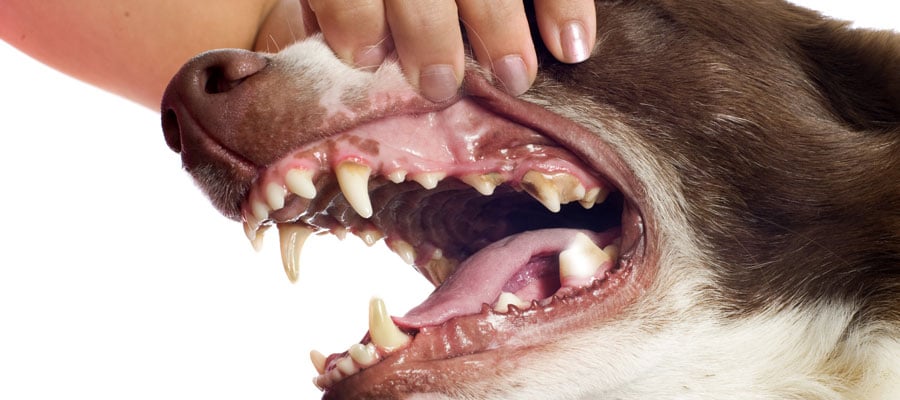It wasn’t so long ago that dental care for dogs wasn’t the norm—in fact, pet dental exams and hygiene are relatively new on the veterinary scene. That’s potentially why pet owners are often unaware of the painful and devastating effects of tooth decay, gum disease, and periodontal disease on their dog’s health. Many dog and cat owners have no idea how prevalent dental disease. By the time they turn three years old, around 80% of dogs have dental disease.
To compound the problem, dental disease is usually a silent menace. Your dog instinctively won’t show you that she’s in pain—it’s a defense tactic to appear perfectly healthy. That’s why so many owners miss their dog’s raging gum or periodontal disease and their pet continues to live in chronic pain every day. When your dog experiences the pain of dental disease, he can’t eat properly, and may even suffer bone loss or jaw breakage. Dental disease is a serious health concern that every pet owner should be aware of and watch out for.
What Causes Dental Disease?
Every time your dog eats, her mouth begins to build up plaque. Plaque is the initial cause of dental disease in both dogs and humans, but unlike humans, dogs are more likely to develop problems quickly. Dog’s mouths are more alkaline (acidic) than ours, making it easier for bacteria to grow and cause an immune response of inflamed gums, bone loss, and destroyed tissue. You can imagine the pain of your own toothaches and red, bleeding gums—imagine this in your dog’s mouth going undetected.
Spotting Dental Disease in Your Dog
Dental disease can go unnoticed for far too long in a dog’s mouth, particularly because the first symptoms are none at all. You wouldn't be able to see gum disease most of the time if you were to open your dog’s mouth. That’s why it’s vital to get your pup in for regular dental exams every single year. Your vet will use x-rays to find the invisible gum-destroying bacteria before it spreads.
Although it’s rare for an owner to spot dental disease before a vet does, here’s what to look out for in your dog’s behavior.
- Problems with eating
- Bleeding, swollen gums
- Blood in food or water after eating or drinking
- Bad breath
- Whimpering or vocalizing while eating
- Bumps in the mouth
- Moving away from touch (especially around the head or mouth)
If you notice any of these signs in your dog’s behavior, call your vet immediately to schedule a dental check-up.
When Dental Disease Goes Bad
Tooth pain and gum issues are the least of your worries if your dog suffers from dental disease. For some dogs, unmanaged gum inflammation can lead to a higher risk for kidney, liver, and heart disease—potentially shortening your beloved dog’s life. For smaller dogs, there’s even a risk of a pathologic jaw fracture that occurs when the disease has destroyed bone to such an extent that even light pressure causes a fracture.
It’s vital to be your dog’s health advocate. Click here to schedule your dog’s dental exam.

